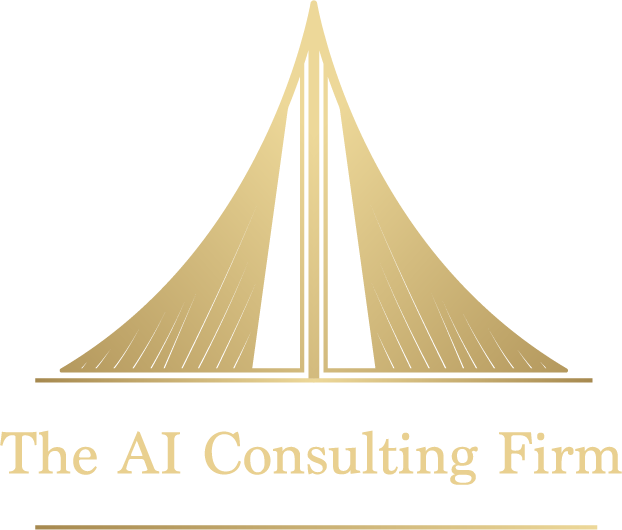The Future of Business Efficiency: AI-Driven Process Automation
Unlocking Business Potential Through AI: Streamlining Operations and Overcoming Challenges with Cutting-Edge Automation
Introduction
As businesses strive to stay competitive and grow, the pressure to optimize operations has never been greater. Every decision, every process, and every resource must be carefully managed to ensure that the company remains agile and responsive to changing market demands. With the challenges of limited resources and tight budgets, finding ways to streamline processes and make data-driven decisions isn't just beneficial—it's critical to long-term success. This is where AI-driven process automation becomes a game-changer, offering businesses the tools they need to enhance efficiency, reduce costs, and stay ahead in an increasingly competitive landscape.
This is where AI-driven process automation comes into play. By automating repetitive tasks, optimizing resource allocation, and providing real-time insights, AI offers businesses a powerful tool to not only keep up with competitors but to outpace them. This blog post will delve into how companies can harness the power of AI-driven process automation to enhance their operations, cut costs, and ultimately, secure a stronger foothold in their respective markets.
Let’s explore the transformative potential of AI-driven automation and discover how it can revolutionize the way your business operates, freeing up valuable time and resources to focus on what truly matters—growing your business.

1. Understanding AI-Driven Process Automation
Definition:
AI-driven process automation refers to the use of artificial intelligence technologies to automate routine and repetitive tasks within business operations. Unlike traditional automation, which follows predefined rules, AI-driven automation leverages machine learning algorithms and other AI tools to adapt to new data, learn from it, and improve over time. This makes the processes not only faster but also smarter, allowing businesses to achieve greater efficiency with less human intervention.
Components:
Key elements of AI-driven process automation include:
- Machine Learning Algorithms: These algorithms analyze data patterns and make decisions based on learned experiences, improving the accuracy and efficiency of automated tasks.
- Robotic Process Automation (RPA): RPA uses software robots to mimic human actions in digital systems, handling repetitive tasks like data entry, processing transactions, and managing emails.
- AI-Powered Analytics: AI tools can analyze large sets of data to provide actionable insights, predict trends, and support decision-making processes.
Relevance to Businesses:
For businesses, the adoption of AI-driven process automation can be particularly impactful. Often operating with resource constraints and a need for speed, companies can benefit immensely from automating mundane tasks that consume time and energy. By freeing up human resources from these routine tasks, businesses can redirect their focus toward strategic initiatives like customer engagement, product development, and market expansion.
Moreover, AI-driven automation levels the playing field, allowing companies to compete by increasing their operational efficiency and agility. With the right tools, businesses can automate everything from customer service inquiries to inventory management, enabling them to operate more smoothly and respond more quickly to market demands.
2. Identifying Operational Challenges in Businesses
Common Pain Points:
Businesses often face a unique set of operational challenges that can stifle growth and reduce efficiency. These challenges typically include:
- Repetitive Tasks: Many companies are burdened with repetitive tasks like data entry, invoice processing, and scheduling. These tasks, while essential, are time-consuming and take valuable time away from more strategic activities.
- Resource Constraints: With limited budgets and lean teams, businesses often struggle to allocate resources effectively. This can lead to overworked staff, missed opportunities, and inefficiencies in daily operations.
- Data Management: Companies generate and manage increasing amounts of data, from customer information to inventory records. Handling this data manually or with outdated systems can lead to errors, slow down decision-making, and make it difficult to extract actionable insights.
- Scalability Issues: As a business grows, its operational processes need to scale accordingly. However, many companies find it challenging to adapt their operations quickly enough to meet new demands, leading to bottlenecks and decreased productivity.
Impact of Inefficiencies:
These operational challenges can significantly hinder a company’s ability to grow and compete in the marketplace. For example:
- Time Drain: Repetitive tasks and manual data management consume valuable time that could be better spent on activities that drive growth, such as marketing, customer engagement, and product development.
- Increased Costs: Inefficiencies often lead to higher operational costs. Whether it’s due to wasted time, human errors, or underutilized resources, these inefficiencies eat into profit margins.
- Slower Decision-Making: Without the right tools, businesses can struggle to make timely, data-driven decisions. Slow decision-making can result in missed opportunities and a lack of responsiveness to market changes.
- Employee Burnout: Overworked staff and resource constraints can lead to employee burnout, reducing productivity and increasing turnover rates.
Addressing these pain points through AI-driven process automation can transform how companies operate, reducing inefficiencies and setting the stage for sustainable growth.

3. Key AI Tools and Technologies for Businesses
Popular AI Tools:
Businesses have access to a growing array of AI tools designed to streamline operations and enhance productivity. Here are some of the most popular AI tools that companies can leverage:
- Zapier: An automation tool that connects various apps and services, allowing businesses to automate workflows without needing to code. For example, Zapier can automatically update a CRM when a new lead is captured from a web form.
- UiPath: A leading Robotic Process Automation (RPA) platform that enables businesses to automate repetitive tasks like data entry, invoice processing, and customer service interactions.
- Xero: An accounting software platform that integrates AI to automate bookkeeping, invoice processing, and financial reporting, helping companies manage their finances more efficiently.
- HubSpot: A CRM platform that uses AI to automate marketing, sales, and customer service tasks, providing businesses with the tools they need to nurture leads, engage customers, and grow their revenue.
- Grammarly: An AI-powered writing assistant that helps improve communication by checking grammar, style, and tone, making it easier for businesses to produce polished content.
Integration with Existing Systems:
One of the key benefits of AI tools is their ability to integrate seamlessly with existing business systems. This means that businesses don’t need to overhaul their entire IT infrastructure to take advantage of AI-driven automation. Instead, they can start small by integrating AI tools with their current platforms and gradually expand their use as they see results.
For instance, an AI-powered CRM like HubSpot can be integrated with existing email marketing tools, allowing businesses to automate email campaigns based on customer behavior. Similarly, accounting software like Xero can integrate with payment processing systems to automate invoicing and financial reporting, saving time and reducing errors.
Cost Considerations:
While AI-driven process automation offers significant benefits, businesses need to consider the costs involved. The good news is that many AI tools are designed with affordability in mind, offering tiered pricing models that cater to companies with limited budgets.
- Subscription Models: Many AI tools operate on a subscription basis, allowing businesses to pay monthly or annually. This makes it easier to manage costs and scale up as needed.
- Free and Freemium Options: Some AI tools, like Grammarly and Zapier, offer free or freemium versions that provide basic features at no cost, with the option to upgrade for more advanced functionality.
- Return on Investment (ROI): When considering AI tools, businesses should evaluate the potential ROI. While there may be upfront costs, the time and cost savings, improved efficiency, and enhanced decision-making capabilities often result in a positive ROI over time.
By selecting the right AI tools and technologies, businesses can begin their journey toward automation without breaking the bank, and gradually scale their AI initiatives as their operations grow.

4. Steps to Implement AI-Driven Process Automation
Assessment:
The first step in implementing AI-driven process automation is to assess your current operations. This involves identifying which processes are most suitable for automation. Start by asking these key questions:
- Which tasks are repetitive and time-consuming?
Look for tasks that are done frequently and follow a predictable pattern, such as data entry, customer support queries, or inventory management. - Where do bottlenecks occur?
Identify areas where manual processes slow down your operations or lead to delays, such as invoice processing or order fulfillment. - What tasks are prone to human error?
Tasks that require manual data entry or complex calculations are often prone to errors, making them ideal candidates for automation. - What are the strategic priorities?
Consider which areas of your business would benefit most from automation in terms of aligning with your growth strategy, such as improving customer engagement or enhancing operational efficiency.
Choosing the Right Tools:
Once you’ve identified the processes that can benefit from automation, the next step is selecting the right AI tools. Here are some criteria to consider:
- Ease of Integration:
Choose tools that can easily integrate with your existing systems and workflows without requiring extensive technical expertise. - Scalability:
Select tools that can grow with your business, offering the flexibility to add more features or handle larger volumes as your needs evolve. - User-Friendliness:
Opt for tools that are easy for your team to learn and use. The goal is to enhance efficiency, not add complexity. - Support and Training:
Consider the level of support and training available from the tool provider. Good customer support can make a significant difference in the smooth implementation of AI tools. - Cost-Effectiveness:
Balance the features you need with your budget. Look for tools that offer a good ROI and align with your financial constraints.
Implementation Plan:
Implementing AI-driven process automation requires careful planning. Here’s a step-by-step guide:
- Pilot Program:
Start with a pilot program that automates a single, high-impact process. This allows you to test the AI tool in a controlled environment and assess its effectiveness. - Training:
Provide your team with the necessary training to use the new tools. Ensure they understand the benefits of automation and how it will impact their daily tasks. - Gradual Rollout:
After a successful pilot, gradually roll out the automation to other processes. Avoid implementing too many changes at once to minimize disruption. - Monitor and Optimize:
Continuously monitor the performance of the automated processes. Gather feedback from your team, track key metrics, and make adjustments as needed to optimize the system. - Scale Up:
As you gain confidence in the automation process, scale up by automating additional tasks and processes. This will free up more time and resources for strategic initiatives.
Monitoring and Optimization:
AI-driven process automation isn’t a set-it-and-forget-it solution. To ensure long-term success, it’s important to continually monitor and optimize your automated processes:
- Regular Reviews:
Conduct regular reviews to assess the performance of the automated systems. Are they delivering the expected results? Are there areas that need improvement? - Feedback Loops:
Establish feedback loops with your team to identify any issues or challenges they encounter. Use this feedback to make iterative improvements. - Stay Updated:
AI technology is rapidly evolving. Stay informed about new features, updates, and best practices that can further enhance your automation efforts. - By following these steps, businesses can effectively implement AI-driven process automation, leading to increased efficiency, reduced costs, and the ability to focus on growth and innovation.
5. The Future of AI in Business Operations
Trends to Watch:
As AI technology continues to advance, the possibilities for businesses are expanding. Here are some emerging trends that could shape the future of AI-driven process automation:
- Hyper-Automation:
This involves automating as many processes as possible within an organization, combining AI, machine learning, and RPA to achieve end-to-end automation. Businesses can use hyper-automation to streamline entire workflows, reducing the need for human intervention. - AI-Driven Decision-Making:
AI is increasingly being used to support decision-making processes by analyzing large datasets and providing actionable insights. In the future, businesses will be able to rely more on AI for strategic decisions, from market analysis to financial forecasting. - Personalization at Scale:
AI tools are becoming more adept at delivering personalized experiences to customers, from tailored marketing campaigns to customized product recommendations. Businesses can leverage these capabilities to enhance customer engagement and build loyalty. - AI-Powered Virtual Assistants:
The use of AI-powered virtual assistants is expected to grow, helping businesses manage everything from customer inquiries to internal task management. These virtual assistants can work 24/7, providing continuous support and improving operational efficiency. - Integration of AI with IoT (Internet of Things):
As more devices become connected through IoT, AI will play a crucial role in managing and analyzing the data generated. Businesses can benefit from AI-driven insights to optimize operations, such as predictive maintenance for equipment or real-time inventory tracking.
Scalability:
One of the key advantages of AI-driven process automation is its scalability. As your business grows, the AI tools you implement today can scale with you, accommodating increased volumes of data and more complex processes. This scalability ensures that your business operations remain efficient and agile, even as you expand.
- Modular Expansion:
Many AI tools offer modular features, allowing you to add new functionalities as your business needs evolve. For example, you might start with basic task automation and later integrate advanced analytics or customer relationship management features. - Cloud-Based Solutions:
Cloud-based AI tools offer flexible scalability, enabling businesses to increase or decrease their usage based on demand. This pay-as-you-go model ensures that you only pay for what you need, making it easier to manage costs.
Long-Term Benefits:
The long-term benefits of AI-driven process automation for businesses are significant:
- Sustained Efficiency:
By continuously optimizing operations, AI helps businesses maintain high levels of efficiency over time, reducing the risk of operational bottlenecks. - Enhanced Competitiveness:
Companies that adopt AI-driven automation early on will gain a competitive edge, staying ahead of the curve in their respective markets. - Future-Proofing:
Investing in AI technology now positions your business for future success. As AI continues to evolve, your business will be better equipped to adapt to new challenges and opportunities.
By embracing AI-driven process automation, businesses can not only optimize their current operations but also position themselves for sustained growth and success in an increasingly competitive market.

Conclusion
In an era where efficiency and agility are critical to business success, AI-driven process automation offers businesses an unparalleled opportunity to optimize operations and drive growth. By automating repetitive tasks, enhancing decision-making, and freeing up valuable resources, AI empowers companies to compete more effectively and respond swiftly to market changes.
As we've explored, the journey toward AI adoption starts with understanding the technology, identifying key operational challenges, and selecting the right tools to implement. With careful planning, monitoring, and a focus on scalability, businesses can leverage AI not just to improve current processes but to future-proof their operations in a rapidly evolving marketplace.
The long-term benefits of AI-driven process automation are clear: sustained efficiency, enhanced competitiveness, and the ability to adapt to new challenges as they arise. For businesses looking to stay ahead, now is the time to embrace AI and unlock its transformative potential.
Looking for expert guidance on implementing AI-driven process automation in your business? At The AI Consulting Firm, we specialize in helping organizations harness the power of AI to streamline operations and achieve sustainable growth. As part of our collaboration with 38 Labs Inc., we bring a wealth of experience and cutting-edge solutions tailored to your unique needs.
Contact us today to learn how we can help your business thrive in the AI era. Together, we can build a smarter, more efficient future for your organization
All Rights Reserved | The AI Consulting Firm | Privacy Policy
